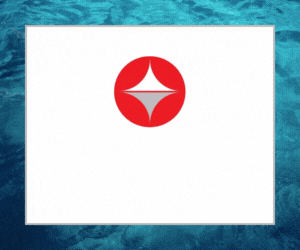Your CV is the key to your next job
So why is it so many yachties spend so little time making sure they avoid the common Superyacht CV mistakes?
Superyacht recruitment specialists WilsonHalligan discuss where you could be going wrong. As a recruitment agency, it is surprising how little time some people take on their Superyacht CV. It is the essential first impression of who you are. Your Superyacht CV doesn’t just list your career history and hobbies, it also indicates how much pride you take in yourself and your work, your attention to detail, and understanding of the industry you are in, the list goes on…

So, why are so many yacht crew getting it wrong?
The world is a highly competitive place with more people than jobs. So if you seriously want that new job, take yourself, and your Superyacht CV seriously and read on for some essential Superyacht CV tips….
Size matters.
Trust us, a contender in this list of Superyacht CV mistakes is that no employer or agency wants to wade through reams of paper detailing every single job you’ve done since you were 16. You need to edit and don’t be scared to omit jobs that only lasted for a very short period or have absolutely no relevance to what you are wanting to do now. A good CV should be 3 pages long, as an absolute maximum, but 2 is ideal.
Mind your language.
Before you begin, read through your current CV and ensure that everything makes sense for where you are NOW. Referring to a job you had 3 years ago as “I am currently working on….” is just going to look ridiculous. Make sure that all the text on the CV is relevant, current, and in the right tense. The other important thing is consistency with words. Ensure words are spelled the same way throughout the whole document. For example, “Superyacht, Super Yacht, and super-yacht” all on the same document are just going to show that you don’t really have any attention to detail.
Be succinct.
Each job you list (in historical order starting with the latest job first) should have a title (in this case the boat name), dates, and a sub-title of what position you held. To elaborate on the position you held, you can include a paragraph or so outlining your role and the tasks you carried out. Anything more is going to send people to sleep.
Show off!
Either at the beginning or the end, it’s good to include a list of Professional Qualifications (bullet points work well here). List all your professional and relevant leisure qualifications, your strongest skills, any awards, your best personality traits (loyal, hard-working, etc.). Sell yourself but try not to be trite or cheesy. Don’t list anything out-of-date. Big yourself up, nobody else will. But remember, try to avoid the classic cliches. Nobody wants to hear your biggest fault is “I care too much”
Contact.
At the top of the CV, ensure your contact details are clearly listed, including email and local mobile numbers. Make it easy for the employer. If they can’t make sense of your phone number do you think they will try to work it out?
You’d think this is a no-brainer, but these details often go without being updated each time the CV is dug out. Also, please have a sensible email address – hotchicksails@yahoo.com is really not the most professional look….
Targeting the job.
This is particularly relevant if you’re not going through an agency. A badly written generic covering ‘letter’ (usually an email these days) never looks good. Do your research, learn about the boat you are applying to and you will not only learn something, but you will also look intelligent and genuine. Particularly if you get to the interview stage. An email with your CV attached is perfectly acceptable. So is a letter attached as a PDF to the same email. Be polite, use professional language, and show you want THIS job, not just ANY job.
Spellcheck, Spellcheck, Spellcheck.
Then repeat x 1000. This is SO important, and so easy that there is no excuse if you get it wrong. Also, don’t forget, just because it is spelled right doesn’t mean it makes sense. Get a friend to check too. Or better still your parents or partner. They speak the truth! Enough said.
References.
There are two minds about references, we feel that either option is acceptable. You can either provide the details of two good referees at the end of the CV (include boat name, position, phone number, and email address), or you can write “references upon request”. If an employer is interested in you enough to get you in for an interview, that information can be shared at the point they feel they might hire you.
*With the amendments to GDPR in May 2018, we are currently unsure if the laws regarding adding reference contact details may change. Keep an eye out for our upcoming GDPR blog for more information!’.
Attach a Photo.
As far as this is concerned, just ensure it looks professional – a photo of you in a bar is not going to send the right message. Wear a clean, smart t-shirt/polo, smile, and only include head and shoulders (minus the sunglasses on the head!)

Keeping up appearances.
Finally, presentation. Pick a good, modern font and ensure your layout is simple and easy to read. Don’t decorate your pages with little borders of sailing boats, or over-complicate anything. Remember, less can be more. Simple, elegant, and professional is always a good look.
So, there you are. This list of Superyacht CV mistakes is by no means exhaustive, but we feel it highlights the most important ‘do’s and don’ts’ of CVS. If you want your application to shine take your time and take care. Do remember, wilsonhalligan is always on-hand to help and offer advice with your Superyacht CV, and do not charge for this service.
To find out how to put together the perfect yachting CV, click here.

















.png)





